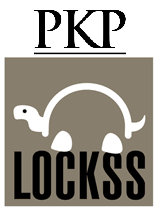Simone Weil: experience, reflection and action of a woman at war
DOI:
https://doi.org/10.51743/cpe.258Keywords:
barbarism, war, resistance, symbol, Simone WeilAbstract
Simone Weil’s experience of war led her to reflect on the destructive effects of barbarism. For her, barbarism generates complicity and when one has the support of a group, it is possible to kill others without any charge of conscience. Barbarism is an attempt to project a greatness that is considered absolute, but which in reality is false. To do so, various instruments of domination are used, which make oneself and others believe that one has unlimited power and strength. To resist barbarism and confront the idolatry of force, the French philosopher plans to form a body of front-line nurses, which is driven by a genuine religious inspiration. The female presence in the points of greatest danger would be, above all, an important propaganda in action, which could strike the imagination. It would also be a symbol of sacrifice, resolution, maternal tenderness, compassion and humanity.
Downloads
Global Statistics ℹ️
|
631
Views
|
469
Downloads
|
|
1100
Total
|
|
References
Bernanos, G. (1938). Les grands cimetières sous la lune. Plon.
Bousquet, J. (2008). Lettre de Joë Bousquet sur le “projet d’une formation d’infirmières de première ligne”. En S. Weil, Œuvres complètes, t. IV, vol. 1 (444-446). Gallimard.
Canciani, D. (1990). Les guerres d’Espagne de Simone Weil. Cahiers Simone Weil, XIII (4), 375-403.
Gabellieri, E. (1986). Psychologie du “gros animal” et philosophie de la barbarie chez Simone Weil. Cahiers Simone Weil, IX (3), 260-285.
Janiaud, J. (2002). Simone Weil: L’attention et l’action. PUF.
Mingelgrün, A. (1987). L’écriture polémique/poétique de Georges Bernanos dans ‘Les Grands Cimetières sous la lune’. Revue belge de philologie et d’histoire, 65 (3), 544-551. DOI: https://doi.org/10.3406/rbph.1987.3593
Narcy, M. (1990). Simone Weil dans la guerre, ou la guerre pensée. Cahiers Simone Weil, XIII (4), 413-423.
Pétrement, S. (1973). La vie de Simone Weil. Fayard.
Weil, S. (1957). Écrits de Londres et dernières lettres. Gallimard.
Weil, S. (1966). Attente de Dieu. Fayard.
Weil, S. (1988). Œuvres complètes, t. II: Écrits philosophiques et politiques, vol. 1: L’engagement syndical (1927-1934). Gallimard.
Weil, S. (1989). Œuvres complètes, t. II: Écrits philosophiques et politiques, vol. 3: Vers la guerre (1937-1940). Gallimard.
Weil, S. (1994). Œuvres complètes, t. VI: Cahiers, vol. 1: (1933 – septembre 1941). Gallimard.
Weil, S. (1997). Œuvres complètes, t. VI: Cahiers, vol. 2: (septembre 1941 – février 1942). Gallimard.
Weil, S. (1999). Œuvres. Gallimard.
Weil, S. (2008). Œuvres complètes, t. IV: Écrits de Marseille, vol. 1: Philosophie, science, religion, questions politiques et sociales. Gallimard.
Weil, S. (2009). Œuvres complètes, t. IV: Écrits de Marseille, vol. 2: La Grèce, l’Inde et l’Occitanie. Gallimard.
Downloads
Published
How to Cite
Issue
Section
License
The author reserves the rights (copyright) of the published works, and the journal encourages and allows their reuse, from the preprint. The works are published in the electronic edition of the journal under a license "Creative Commons Attribution / Attribution-NonCommercial 4.0 International Public License - CC BY-NC 4.0", and can be copied, used, disseminated, transmitted and publicly exhibited.
The author / s partially transfer the property rights (copyright) of this work for the printed and online editions, provided that:
- The authorship and original source of its publication (magazine, publisher and URL of the work) is cited.
- Are not used for commercial purposes.
- The existence and specifications of this user license are mentioned.
It also declares to have respected the ethical principles of research and to be free from any conflict of interest.
"C.P.E." encourages the authors and the scientific community to the maximum promotion and dissemination of the works in their final version through:
1) Your list of contacts (emails) and social networks (Facebook, Twitter, LinkedIn ...).
2) Institutional repository of your University and public repositories (Mendeley, Cosis ...).
3) Scientific social networks (ResearchGate, Academia.edu, Kudos ...).
4) Personal or institutional website, blog, etc.
5) Google Scholar, ORCID, ResearchID, ScopusID, Dimensions, PlumX ...
6) Printed copies purchased directly and sent to specialists for reading and subsequent citation if appropriate.




















1.png)
1.png)

1.png)





.png)
.png)

.png)
1.png)
1.png)
